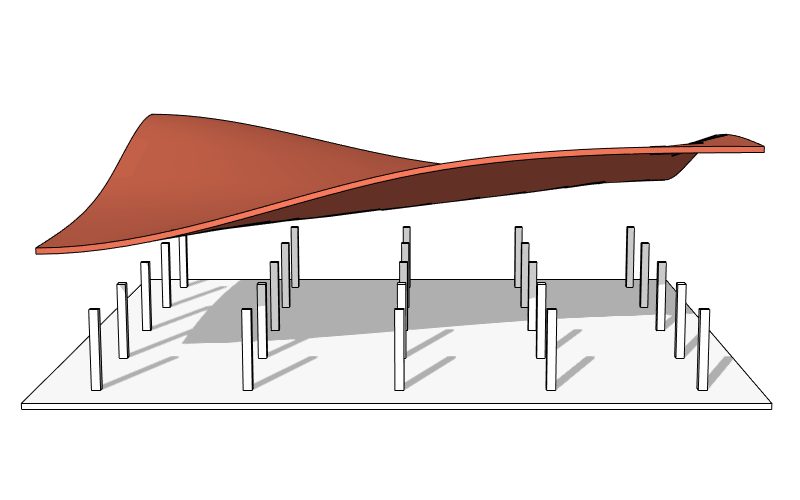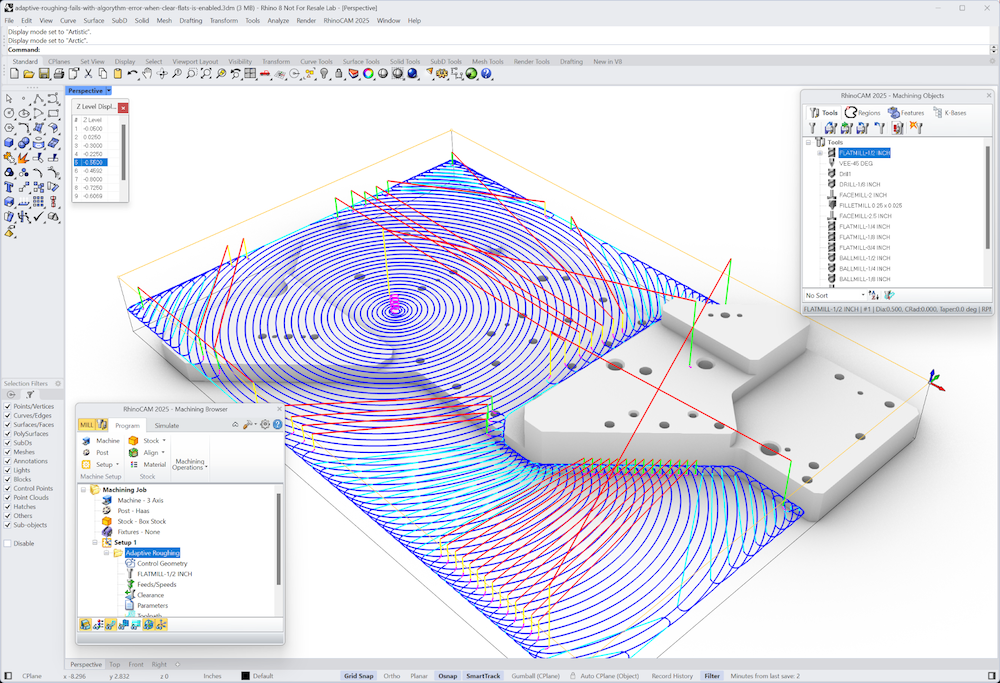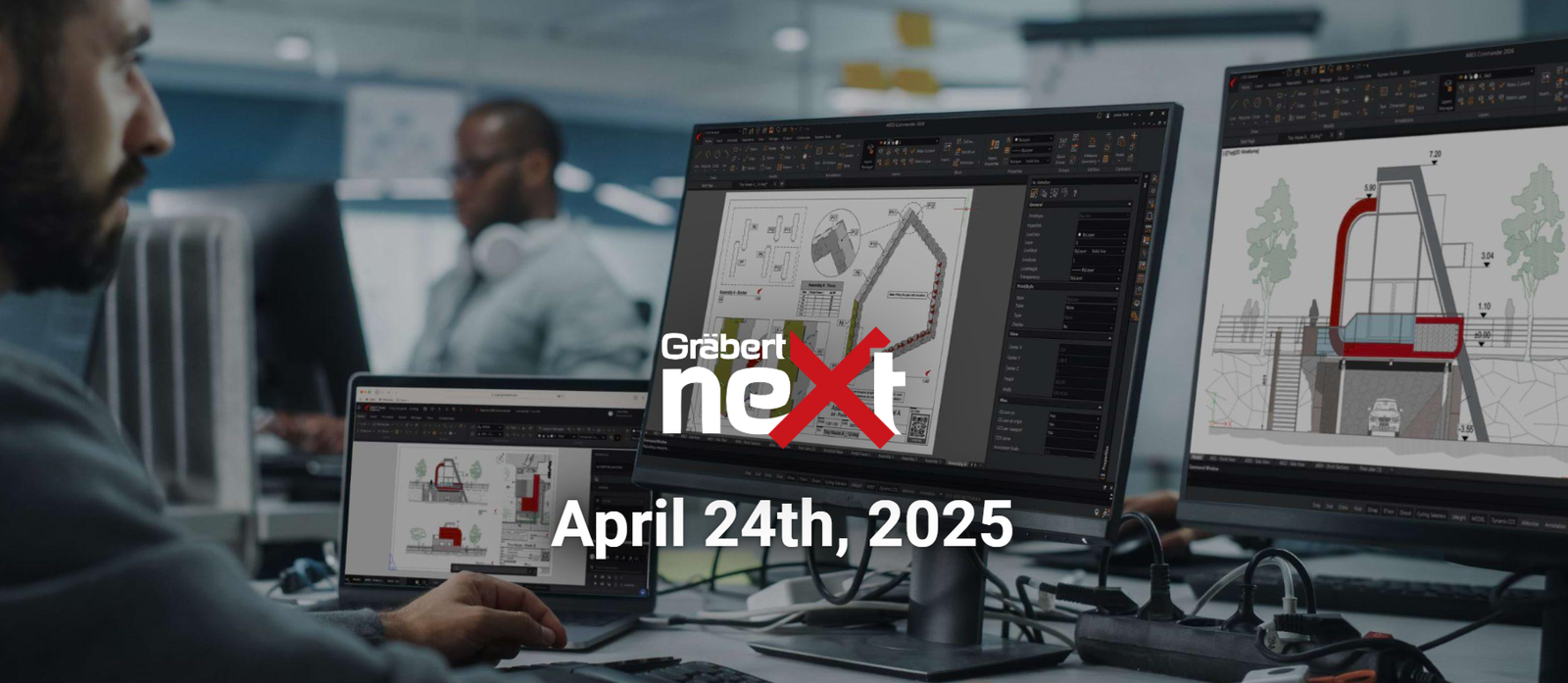Your Cart is Empty
Customer Testimonials
-
"Great customer service. The folks at Novedge were super helpful in navigating a somewhat complicated order including software upgrades and serial numbers in various stages of inactivity. They were friendly and helpful throughout the process.."
Ruben Ruckmark
"Quick & very helpful. We have been using Novedge for years and are very happy with their quick service when we need to make a purchase and excellent support resolving any issues."
Will Woodson
"Scott is the best. He reminds me about subscriptions dates, guides me in the correct direction for updates. He always responds promptly to me. He is literally the reason I continue to work with Novedge and will do so in the future."
Edward Mchugh
"Calvin Lok is “the man”. After my purchase of Sketchup 2021, he called me and provided step-by-step instructions to ease me through difficulties I was having with the setup of my new software."
Mike Borzage
An Interview with Joel Orr, Chief Visionary of Cyon Research
October 08, 2007 7 min read

Joel Orr (blog), is a one of a kind person in the Design and CAD world, a person who uses the word future meaning it and not just to refer to the next financial quarter. Joel calls himself a visionary and loves to talk and write about technology, design, and obviously the future. He is well known in the CAD and DCC community by the less young as one of the founders of CGW (Computer Graphics World) magazine. More recently he co-founded Cyon Reserach Corp. In the process Joel found the time to write a few books (Every Man a Hero, Every Woman a Coach published in 2005, Structure is Destiny: The Dandelion Paradox published in 2004, and The Victorious Engineer.) I believe every once in a while we all should stand up, look at the horizon, and try to see what the future is preparing for us and for the ones that will follow us in our professional world. Joel is the perfect person to help us see through the fog of daily routine.
Joel, can you tell us a bit about yourself and your professional activities?
I love people and I love technology
I love people and I love technology, and I am thrilled by the potential of the latter to empower the former. I see myself as a mediator between technology and people – in particular, engineers and architects. My academic training was in pure math, but I have been involved in computers as a programmer and systems architect since 1969.
Somewhere along the way I stopped programming and began writing and speaking about the power and pitfalls of computer technology. My client list includes many Fortune 500 firms, government agencies, and all the major CAD companies.
I was an Autodesk Distinguished Fellow from 1990 to 1993, and the Bentley Engineering Laureate from 1997 to 2000. I helped found the now-defunct National Computer Graphics Association, and served as its president.
In 1999, I helped found Cyon Research Corporation, a consulting firm that sponsors COFES, the annual Congress on the Future of Engineering Software.
You have witnessed and influenced the evolution of the CAD systems for many years. Which evolution of design software most impressed you, when you think back on your expectations at the beginning?
I believe that simulation is the end of CAD – both its purpose and its terminus
Robert Heinlein’s "Door Into Summer" – 1951, I think – describes "Drafting Dan," a keyboard-controlled robot that turned out drawings. Heinlein didn’t foresee graphical input, and only a limited form of output. But the first CAD systems, from IBM’s DAC to Dr. Patrick J. Hanratty’s ADAM, were clearly related to Drafting Dan.
CAD has been a fascinating set of technologies to watch. Its unfolding over time has been a reflection of the engineering process itself, a dialectic between the envisioned ideal and the constraints of technological, social, and individual learning. Tools are envisioned and built – and then the limitations and capabilities of the tools as implemented inspire refinements and new tools. It’s an unending process, accelerating with Moore’s Law, governed by the ability of people and organizations to absorb novelty.
To me, Ivan Sutherland‘s "Sketchpad" – the subject of his 1961 MIT PhD – laid the technological foundation for the human/machine interaction we now call CAD. It was a prescient document, a trailblazer, whose influence is still evident 46 years later.
As a fan of engineers who never studied engineering, it took me quite a while to realize that the "design" in "computer-aided design" was just a placeholder: All the initial systems were computer-aided drafting systems. They automated the process of drawing production, not the process of design.
With good reason, to be sure: There was no well-defined discipline of design, so how could it be automated? What exactly would you automate? Drawings were the work-product, the very currency of engineering and architecture; to a great extent, they still are.
Drawings, not design, were the inspiration for 3D modeling. Only today is there beginning to be acceptance of concepts that can lead to computer-aided design, such as digital prototyping and simulation.
In fact, I believe that simulation is the end of CAD – both its purpose and its terminus. CAD has been traversing a path from abstraction to concreteness, where the model has more and more of the attributes of "the real thing."
What major features are still missing in today’s CAD system that could be easily added with existing technologies?
(what is missing is) keeping track of the what and why of engineering decisions that lead to what is ultimately manufactured
What is missing is the necessary tie between the engineering process and what happens within the computer. Any sort of keeping track of the what and why of engineering decisions that lead to what is ultimately manufactured or constructed is absent. That’s why reuse of components is rare and limited: We don’t know exactly what we did, nor do we know why we did one thing and not another. And any attempt to capture that knowledge is resisted by the very people who stand to gain the most by it. I helped promote a company called KollabNet, who has the only approach I’ve seen to this profound challenge; it has been widely ignored in the market.
Autodesk, Dassault, Siemens PLM, PTC, and all the other CAD firms have much more to offer customers than customers are willing to buy.
On the other hand, the vendors have foisted systems of mind-numbing complexity and heartbreaking software quality on the engineering professionals who are just trying to do their jobs, and I don’t think their feet have been sufficiently held to the fire for their lacunae.
Things are getting better, but I think that some enlightened self-interest on both sides of the vendor-customer divide would go a long way to picking up the pace of improvement.
Is your vision about the future of CAD pessimist like that of Ralph Grabowski, or do you see more technological innovations despite the establishment of 64 bit as a standard platform?
the accelerating power of computers will bring us multiplying breakthroughs
Frankly, I think Ralph is a realist, not a pessimist. I’m more of an optimist, which no amount of disappointment seems to quell…  I have faith that the accelerating power of computers, coupled with new ways of thinking about computation – for example, genetic programming and biomimetics – will bring us successive and multiplying breakthroughs in the next few years that are difficult to envision.
I have faith that the accelerating power of computers, coupled with new ways of thinking about computation – for example, genetic programming and biomimetics – will bring us successive and multiplying breakthroughs in the next few years that are difficult to envision.
Are all the technologies and innovations we have seen in the last 20 years really changing the structure of the design process or “just” allowing the designer to design “more, better, and faster”?
we produce new tools, then learn surprising things about our design processes and intentions as we try to use the tools to do what we thought we wanted to do
As I suggested above, I think there is a dialectic: We produce new tools, then learn surprising things about our design processes and intentions as we try to use the tools to do what we thought we wanted to do. These new thoughts inspire us to produce other new tools, manifesting our new thoughts – and provoking us to successive cycles of innovation.
Damping that process is the human reluctance to explore change; we fear what we might lose more than we hope for what we might gain. So generations of engineers have to retire or die to make room for the next generation. It took 20 years for computer-aided drafting to really catch on, and another 20 years for 3D. But I am hopeful; my grandkids who are engineers grew up with computers at home, and are far more demanding and less fearful than their mentors.
We do turn out new products – cars, airplanes, consumer goods, and more – much faster than ever before. And they are safer, cheaper, and more flexible than ever before. CAD gets much of the credit for these improvements, and it’s only the beginning.
Despite all the technological improvements designers still limit as much as possible interaction with other departments. What can be done to enhance the interaction without distracting the designer from their challenging and critical tasks?
I think your observation is spot on, Franco. I think we need to do a better job of understanding organizations and how they hinder our ability to take advantage of all that technology has to offer. (I wrote a book about it, "Structure is Destiny.")
You went from founding a paper magazine such as CGW to becoming a blogger. How has been your experience been so far with your blog and in general with all the new web2.0 communication and collaboration technologies (wikis, blogs, IMs, etc.) ?
I’ve adopted a personal mission to help more young people choose engineering as a career
Blogging, podcasting, social networking sites, etc. are manifesting the "many-to-many" communications Alvin Toffler spoke about decades ago, along with Marshall McLuhan‘s "global village." They let all of us – not just "accredited" or "recognized" authorities – express ourselves and reach global audiences, instantly. The well-known challenge is to sift through this avalanche of words, images, and sounds for meaning and relevance. I haven’t found the secret – if there is one – to sorting, or to breaking through the cacophony with my messages.
But I’m having a great time.
I’ve adopted a personal mission to help more young people choose engineering as a career. We need more engineers than we are producing. If you want to help me, check out www.geeking.info. And tell any colleges or high schools you are connected with that I’d like to come and speak to their students. Find me at joel.orr@cyonresearch.com and www.joelorr.com.
I would like to thank Joel Orr for taking the time to answer my questions. If you have any questions for Joel or for Novedge, please leave a comment below and we will be glad to answer.
Franco Folini
Also in NOVEDGE Blog

Enhance Your Designs with VisualARQ 3: Effortless Geometry Extensions for Walls and Columns
April 30, 2025 8 min read
Read More
MecSoft Unveils RhinoCAM 2025 and VisualCAD/CAM 2025 with Enhanced Features
March 08, 2025 5 min read
Read MoreSubscribe
Sign up to get the latest on sales, new releases and more …



